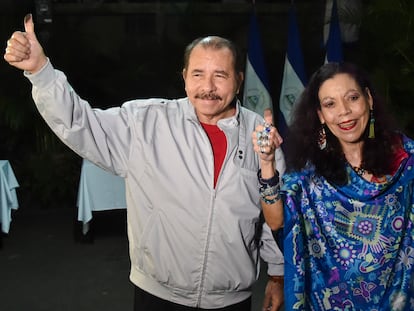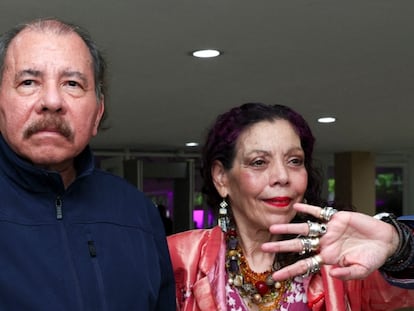The Nicaraguan political prisoners who resisted torture in Ortega and Murillo’s prisons
A non-profit run by exiles has produced ‘Freedom behind bars,’ a book that compiles the stories of 11 female survivors of the regime’s notorious penitentiary system
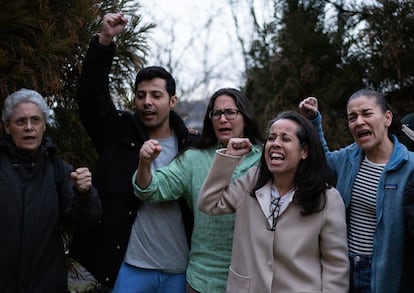
On February 9, 2023, a U.S. plane flew from Managua to Washington. Inside were 222 malnourished Nicaraguans who were cherishing freedom after years of confinement. A few hours earlier, the political prisoners had been taken from their cells without a word. Many thought they were about to die at the hands of the prison guards of the Daniel Ortega and Rosario Murillo regime, after so much time spent in solitary confinement, subjected to torture and inhumane treatment. To their surprise, they landed safely in the U.S. capital. There were reunions with loved ones, hugs, and tears for those who had been left behind. A surreal feeling of unreality.
The brutal repression of the Nicaraguan regime in prisons, documented extensively by the Nicaraguan press in exile and human rights associations, attacked women with particular viciousness. Now, a testimony has been produced that shines some light into the cracks of Ortega’s prisons: Libertad tras las rejas (or, Freedom behind bars), a book that recounts the stories of 11 of those 222 political prisoners; a stark story of resilience, hope in the face of dehumanization, and a cry for freedom against the cruelest living dictatorship on the continent.
Ortega, cornered by international pressure, loosened his grip with the mass release of political prisoners. But, following the mantra of the old dictators, those with an iron fist and kid gloves, he had reserved one final twist. He withdrew the nationality of the 222 prisoners and 94 other political exiles, among them former comrades in arms and personalities from the fields of the arts, politics, or journalism in Nicaragua.
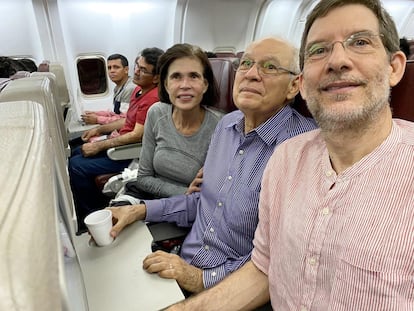
Freedom behind bars is a project conducted by the Be Human Campaign, a non-profit run by Nicaraguan exiles, and edited by Juan Marieli and Wilfredo Miranda Aburto, a contributor at EL PAÍS. The writers that byline each story are among the most respected in Latin American journalism and literature: Alma Guillermoprieto, Jon Lee Anderson, Gioconda Belli, Sergio Ramírez, Laura Restrepo and Pedro Saboulard, Martín Caparrós, Claudia Piñeiro, Sabrina Duque, Julián Navarrete, Lorena Arroyo, in addition to Marieli and Miranda Aburto themselves. All the work on the book was voluntary.
The Be Human Campaign began in 2021 in an attempt to raise awareness of the situation in Nicaragua. “We sent powerful messages about hunger, the physical conditions of the cells, the lack of visitation, and in the end there was expatriation, the stripping of nationality of 222 prisoners, and we thought it was worth leaving concrete evidence that would last; contribute to historical memory and highlight the resilience of people who had been imprisoned,” explains one of the members of the project, which was presented Monday in San José (Costa Rica).
In search of a publisher
Freedom behind bars has not been published in physical format because, being a voluntary work, it does not yet have a publisher. “We are looking for a publisher because we would like this book to be disseminated beyond our limited printing and distribution capabilities. We have always worked with few resources and a lot of will. We do not need, nor do we want, to generate financial revenue, but rather political revenue; to make the stories of these brave women known as widely as possible. In the end we have a sample of women who suffered torture, repression, and isolation. From 23-year-olds, like Samantha, to older people like Violeta, who is 71 years old,” says the same member.
Samantha, the youngest of the group, is Samantha Jirón. During the repression unleashed by Ortega and Murillo during Operation Cleanup in 2018, she was only 18 years old and yet still participated in the resistance against the regime, which murdered at least 355 people, according to the Inter-American Commission on Human Rights (IACHR). Lorena Arroyo, a journalist for this newspaper, writes in Freedom behind bars: “Five years later, on July 8, 2023, that same young woman is in a Latino beauty salon in San Leandro, on the outskirts of San Francisco, California, to dye her hair blue. It is a process that takes several hours: first you have to bleach your medium-length brunette hair to a Lady Gaga-style blonde so that it can then take on the chosen color, a metallic blue that is much more than an esthetic decision. For a 23-year-old woman who has spent a year and three months in a Nicaraguan prison, who is already in her second exile and who has become stateless for opposing Ortega and Murillo, dyeing her hair is a way of exercising her freedom... and an attempt to fight her own traumas. From now on, and until she decides to change her look again, every day Samantha will see in the mirror the hue of the prison uniform that she wore for 15 consecutive months and that, after leaving prison, she vowed not to wear again.”
Violeta, the oldest of the prisoners, is Violeta Granera Padilla, a candidate for the Independent Liberal Party (PLI) in the presidential elections of 2016. The Nicaraguan author Gioconda Belli, also exiled and denationalized by Ortega, begins her story like this: “Violeta remembers a day when they woke them up at 2 a.m. and told them to shower and get ready. Maybe because of the trauma, she tells me, of the murder of her father — because there were times when she dreamed that the guerrillas came in and took her away or killed her children — she was certain that they were being taken away to be shot.”
Perhaps the most important political prisoner in the book is Dora María Tellez, 68, a legendary guerrilla also known as Commander Two. Aged only 22, in 1978, she attacked the National Palace of Managua, the seat of power of the dictator Anastasio Somoza, as part of a battalion of the Sandinista National Liberation Front, in one of the biggest strategic blows suffered by the regime. The feat was immortalized by Gabriel García Márquez in his chronicle Assault on the Palace, which began with that masterful first line: “The plan seemed too simple to be sane.”
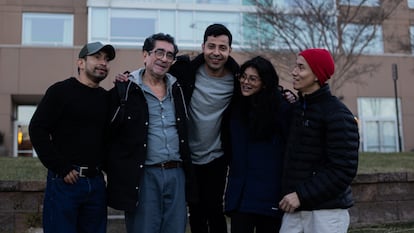
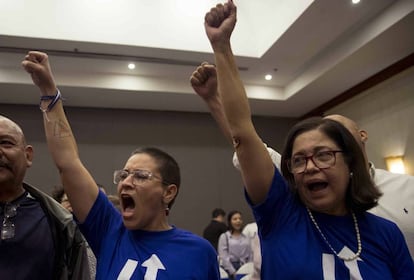

In Freedom behind bars it is Alma Guillermoprieto, one of the celebrated correspondents who covered the Sandinista Revolution from its beginning, who is in charge of giving it a voice. She writes: “Many years ago, Dora María told me that during the long year she spent in the mountains in the dense tropical jungle that was then northwest Nicaragua, what troubled her was not only hunger, but also being constantly surrounded by the intense green of the vegetation. ‘When you are in the city you say: how cute, how green! And when you’re in the mountains, you want to see yellow, red, white, blue! So, that green-green exhausts you, and the toughness [of the situation] exhausts you too.’ But then there were companions around her, and there was hope. Not in prison. The prisoner saw her incarceration as one more battle that had to be fought, but it was not always possible to maintain that defiant posture in the midst of absolute solitude. Then, in the afternoons, she says, she would feel like she was dead.”
Like those of Samantha, Violeta, or Commander Two, all the stories are different, unique and at the same time make up a common mosaic of the horror in Ortega’s prisons. They also speak of the collective muscle that makes up the resistance against the dictator. The member of the Be Human Campaign sums it up like this: “I would like to highlight the courage and resilience of these women: they never lost hope or laughter. When you read their testimonies you realize that even in the worst of scenarios they never lost the ability to dream, the hope that their contribution to the freedom of Nicaragua made sense.”
Sign up for our weekly newsletter to get more English-language news coverage from EL PAÍS USA Edition
Tu suscripción se está usando en otro dispositivo
¿Quieres añadir otro usuario a tu suscripción?
Si continúas leyendo en este dispositivo, no se podrá leer en el otro.
FlechaTu suscripción se está usando en otro dispositivo y solo puedes acceder a EL PAÍS desde un dispositivo a la vez.
Si quieres compartir tu cuenta, cambia tu suscripción a la modalidad Premium, así podrás añadir otro usuario. Cada uno accederá con su propia cuenta de email, lo que os permitirá personalizar vuestra experiencia en EL PAÍS.
¿Tienes una suscripción de empresa? Accede aquí para contratar más cuentas.
En el caso de no saber quién está usando tu cuenta, te recomendamos cambiar tu contraseña aquí.
Si decides continuar compartiendo tu cuenta, este mensaje se mostrará en tu dispositivo y en el de la otra persona que está usando tu cuenta de forma indefinida, afectando a tu experiencia de lectura. Puedes consultar aquí los términos y condiciones de la suscripción digital.
More information
Archived In
Últimas noticias
Most viewed
- Sinaloa Cartel war is taking its toll on Los Chapitos
- Oona Chaplin: ‘I told James Cameron that I was living in a treehouse and starting a permaculture project with a friend’
- Reinhard Genzel, Nobel laureate in physics: ‘One-minute videos will never give you the truth’
- Why the price of coffee has skyrocketed: from Brazilian plantations to specialty coffee houses
- Silver prices are going crazy: This is what’s fueling the rally

